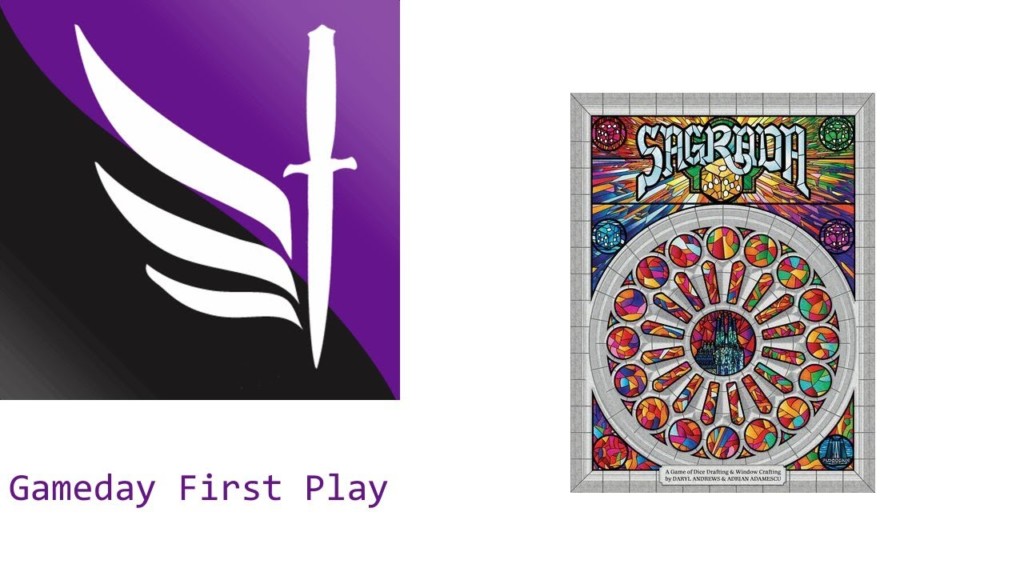In Sagrada, players will place dice in a grid in order to build a very pretty stained glass window.
Will you place the dice correctly, or will you make yourself leave gaps in your beautiful pattern?
Each player builds a stained glass window by building up a grid of dice on their player board. Each board has some restrictions on which colour or shade (value) of a die can be placed there.
Dice of the same shade or colour may never be placed next to each other. Dice are drafted in player order, with the start player rotating each round, snaking back around after the last player drafts two dice. Scoring is variable per game based on achieving various patterns and varieties of placement…as well as bonus points for dark shades of a particular hidden goal colour.
Special tools can be used to help you break the rules by spending skill tokens; once a tool is used, it then requires more skill tokens for the next player to use them.
Sagrada Dice Game Review
My first impressions of Sagrada including a brief overview of gameplay followed by my final summary.
Summary
Dice placement is one of my favourite mechanisms. I like knowing exactly what I need to place and where I need to place it but not knowing if I’ll ever get the chance to get that exact colour and/or number.
This is exaggerated when the drafting of the dice means maybe I get the perfect roll, but someone gets it first!
The adjacency rule is really nice. It means every dice placement means you have to consider what spaces you’re leaving open on future turns. I mentioned in my video that due to not taking this into account I left a space that could only hold a 4, 5 or 6 and it HAD to be green…

I don’t think I’ve played many games where you place so many dice together. Games like FUSE and Flatline do it in real-time but you play multiple cards/rounds, not just one.
Blueprints is a bit closer but again you play over 3 rounds. The closest is Roll Player, where you’re building a fantasy character. Colours and Numbers on dice matter and where you place them will help you score points.
Sagrada does it simply, with game-to-game variety in scoring and abilities and of course, it’s very very pretty.
Jesta ThaRogue



Leave a Reply